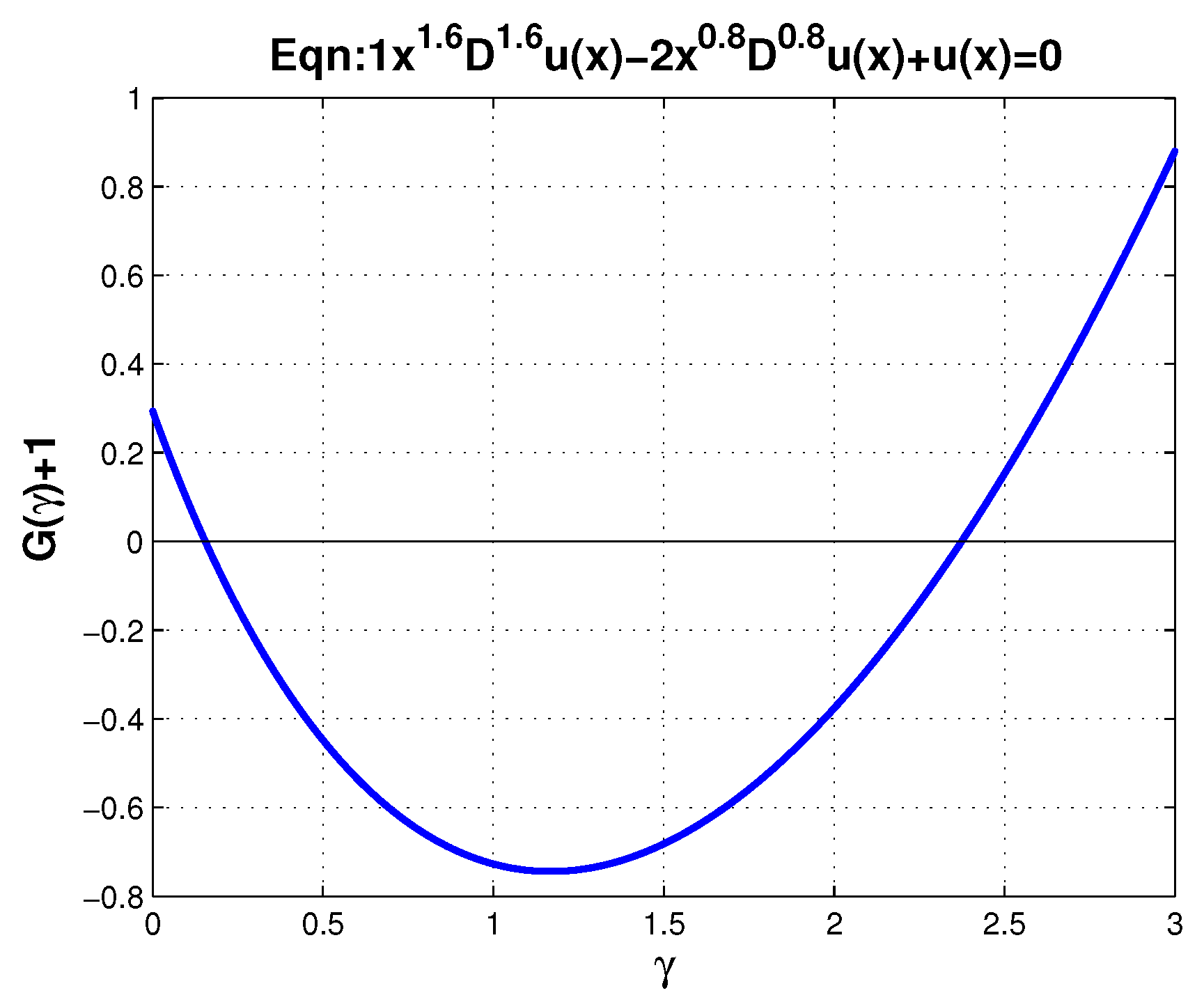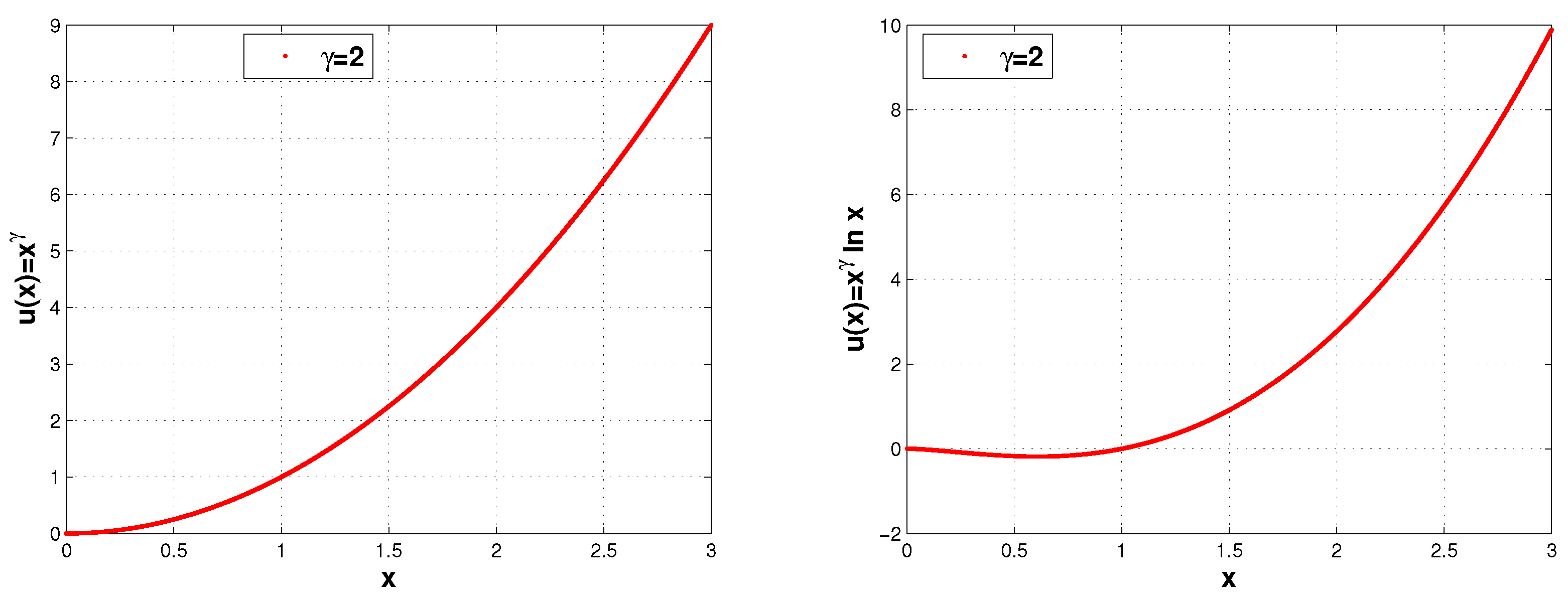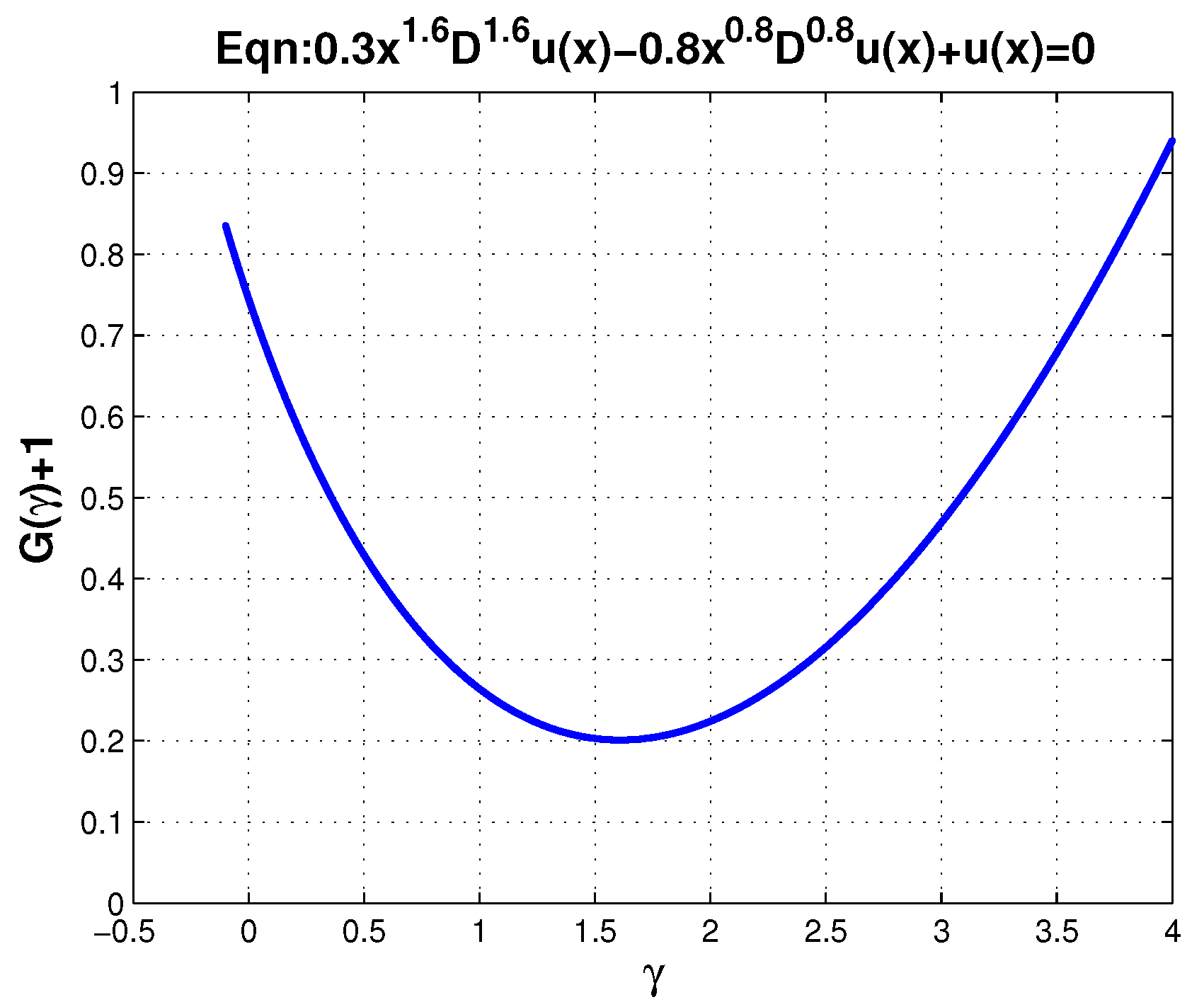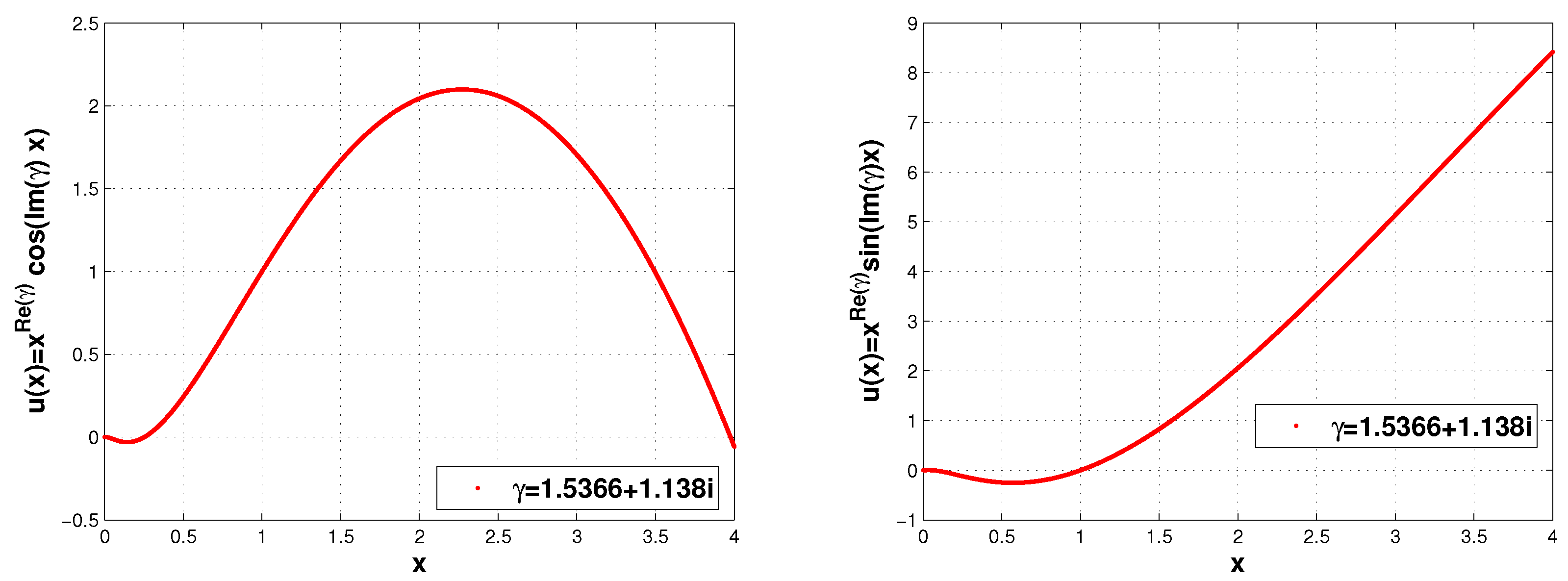Constructing Solutions to Multi-Term Cauchy–Euler Equations with Arbitrary Fractional Derivatives
Abstract
:1. Introduction
2. Constructing Solutions
3. Linear Independence of Solutions
4. Examples
5. Conclusions
Author Contributions
Funding
Data Availability Statement
Conflicts of Interest
References
- Kilbas, A.A.; Zhukovskaya, N.V. Euler-type non-homogeneous differential equations with three Liouville fractional derivatives. Fract. Calc. Appl. Anal. 2009, 12, 205–234. [Google Scholar]
- Zhukovskaya, N.V.; Kilbas, A.A. Solving Homogeneous Fractional Differential Equations of Euler type. Differ. Equ. 2011, 47, 1714–1725. [Google Scholar] [CrossRef]
- Zhukovskaya, N.V. Representation of the solutions of the fractional differential equation of Euler type using fractional analogue of the Green function. Chelyabinsk J. Phys. Math. 2018, 3, 129–143. (In Russian) [Google Scholar]
- Samko, S.G.; Kilbas, A.A.; Marichev, O.I. Fractional Integrals and Derivatives: Theory and Applications; Gordon and Breach: New York, NY, USA, 1993. [Google Scholar]
- Kilbas, A.A.; Srivastava, H.M.; Trujillo, J.J. Theory and Applications of Fractional Differential Equations; Elsevier: Amsterdam, The Netherlands, 2006. [Google Scholar]
- Normand, J.-M. Calculation of some determinants using the s-shifted factorial. J. Phys. A Math. Gen. 2004, 37, 5737. [Google Scholar] [CrossRef]
- Dubovski, P.B.; Slepoi, J.A. Dual approach as empirical reliability for fractional differential equations. J. Phys. Conf. Ser. 2021, 2099, 012004. [Google Scholar] [CrossRef]
- Dubovski, P.B.; Slepoi, J.A. Analysis of solutions of some multi-term fractional Bessel equations. Fract. Calc. Appl. Anal. 2021, 24, 1380–1408. [Google Scholar] [CrossRef]
- Dubovski, P.B.; Slepoi, J.A. Construction and analysis of series solutions for fractional quasi-Bessel equations. Fract. Calc. Appl. Anal. 2022, 25, 1229–1249. [Google Scholar] [CrossRef]
- Shishkina, E.; Sitnik, S.M. Method of Operators of Transformations for Differential Equations with Bessel Operators; FizMatLit: Moscow, Russia, 2019. (In Russian) [Google Scholar]
- Boyadjiev, L.; Dubovski, P.B.; Slepoi, J.A. Existence for partial differential equations with fractional Cauchy-Euler operator. J. Math. Sci. 2022, 266, 285–294. [Google Scholar] [CrossRef]
- Dubovski, P.B.; Slepoi, J.A. Existence and linear independence theorem for linear fractional differential equations with constant coefficients. J. Appl. Anal. 2024, 30, 117–128. [Google Scholar] [CrossRef]





Disclaimer/Publisher’s Note: The statements, opinions and data contained in all publications are solely those of the individual author(s) and contributor(s) and not of MDPI and/or the editor(s). MDPI and/or the editor(s) disclaim responsibility for any injury to people or property resulting from any ideas, methods, instructions or products referred to in the content. |
© 2024 by the authors. Licensee MDPI, Basel, Switzerland. This article is an open access article distributed under the terms and conditions of the Creative Commons Attribution (CC BY) license (https://creativecommons.org/licenses/by/4.0/).
Share and Cite
Dubovski, P.B.; Slepoi, J.A. Constructing Solutions to Multi-Term Cauchy–Euler Equations with Arbitrary Fractional Derivatives. Mathematics 2024, 12, 1928. https://doi.org/10.3390/math12131928
Dubovski PB, Slepoi JA. Constructing Solutions to Multi-Term Cauchy–Euler Equations with Arbitrary Fractional Derivatives. Mathematics. 2024; 12(13):1928. https://doi.org/10.3390/math12131928
Chicago/Turabian StyleDubovski, Pavel B., and Jeffrey A. Slepoi. 2024. "Constructing Solutions to Multi-Term Cauchy–Euler Equations with Arbitrary Fractional Derivatives" Mathematics 12, no. 13: 1928. https://doi.org/10.3390/math12131928
APA StyleDubovski, P. B., & Slepoi, J. A. (2024). Constructing Solutions to Multi-Term Cauchy–Euler Equations with Arbitrary Fractional Derivatives. Mathematics, 12(13), 1928. https://doi.org/10.3390/math12131928






